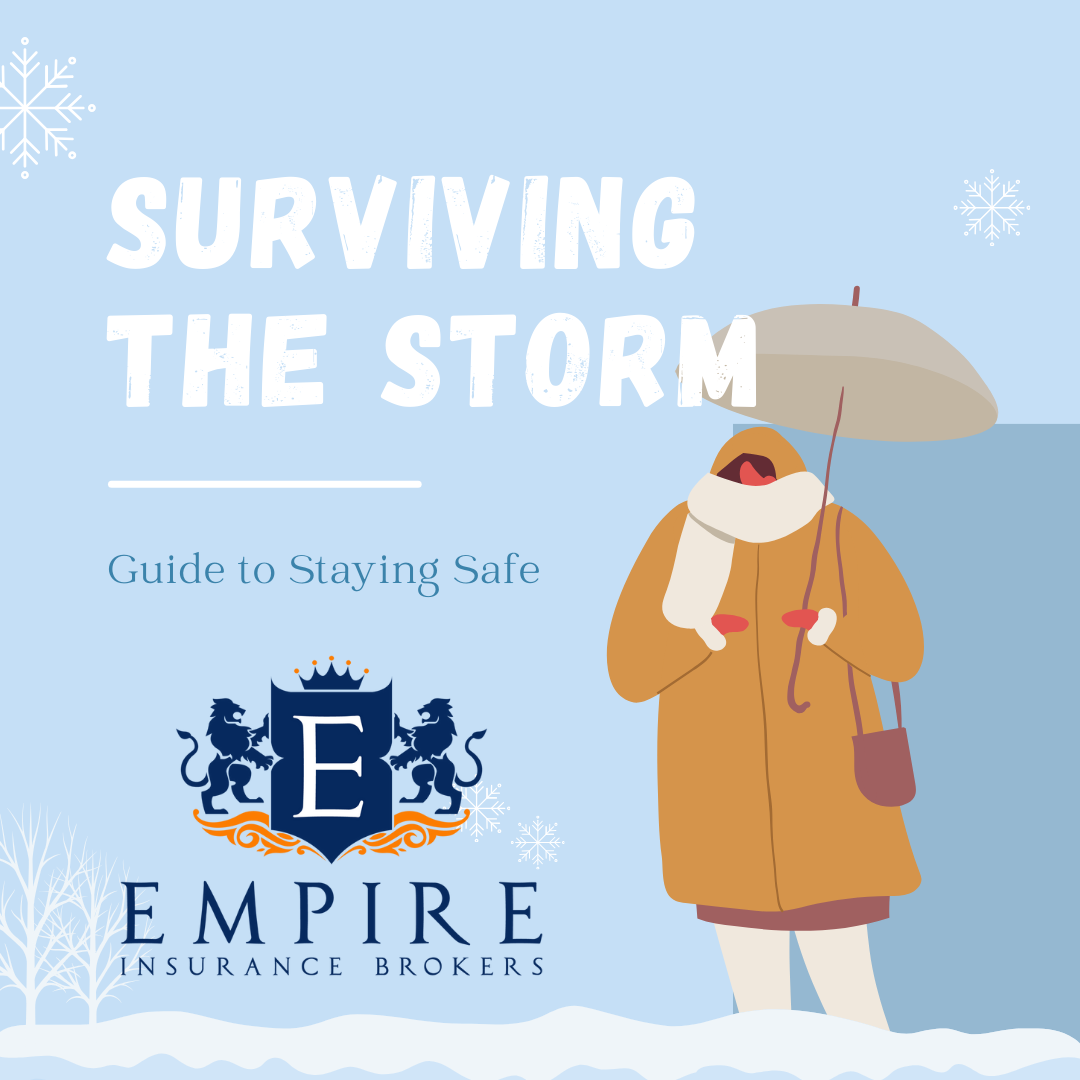
As winter sets in, so does the possibility of encountering a snowstorm. While the beauty of snow-covered landscapes is undeniable, being prepared for the challenges a snowstorm brings is crucial. In this guide, we’ll cover essential tips on what to do in a snowstorm to ensure your safety and comfort.
Check out our tips below and if you have questions about submitting a claim, check out our claim guide here or contact us and we’re happy to help.
Stay Informed
Monitor weather forecasts regularly, especially during the winter months. Stay informed about any upcoming snowstorms and be aware of warnings or advisories issued by local authorities. This knowledge will help you plan accordingly and make informed decisions.
Stock Up on Essentials
Before a snowstorm hits, make sure you have an ample supply of essentials such as non-perishable food, bottled water, medications, and other necessary supplies. Consider having a backup power source, like a generator, in case of power outages.
Prepare Your Home
Insulate your home by sealing windows and doors to keep the cold air out. Have your heating system checked before winter arrives to ensure it’s working efficiently. Stock up on firewood if you have a fireplace, and have blankets and warm clothing readily available.
Create an Emergency Kit
Prepare an emergency kit that includes essential items like flashlights, batteries, a first aid kit, blankets, and any necessary medications. This kit will come in handy if you experience power outages or other emergencies during a snowstorm.
Stay Indoors
When a snowstorm is in full force, it’s safest to stay indoors. Avoid unnecessary travel, as roads may be hazardous and visibility reduced. If you must go out, inform someone of your plans, and let them know when you expect to return.
Dress Appropriately
When venturing outside in the cold and snow, dress in layers to stay warm. Wear waterproof and insulated clothing, along with gloves, a hat, and waterproof boots. Frostbite and hypothermia are serious risks in extremely cold conditions, so take precautions to protect yourself.
Shovel Safely
If you need to shovel snow, take breaks and avoid overexertion. Use a proper snow shovel and lift with your legs to prevent back injuries. Clear snow from walkways and driveways promptly to prevent ice buildup.
Be Mindful of Carbon Monoxide
Ensure proper ventilation when using heating sources like gas furnaces or fireplaces. Carbon monoxide can be a silent killer, so have a working carbon monoxide detector in your home.
Facing a snowstorm requires preparation, vigilance, and a commitment to safety. By staying informed, stocking up on essentials, and taking necessary precautions, you can weather the storm with confidence. Remember, it’s better to be over-prepared than caught off guard when the snow starts falling. Stay warm, stay safe!


